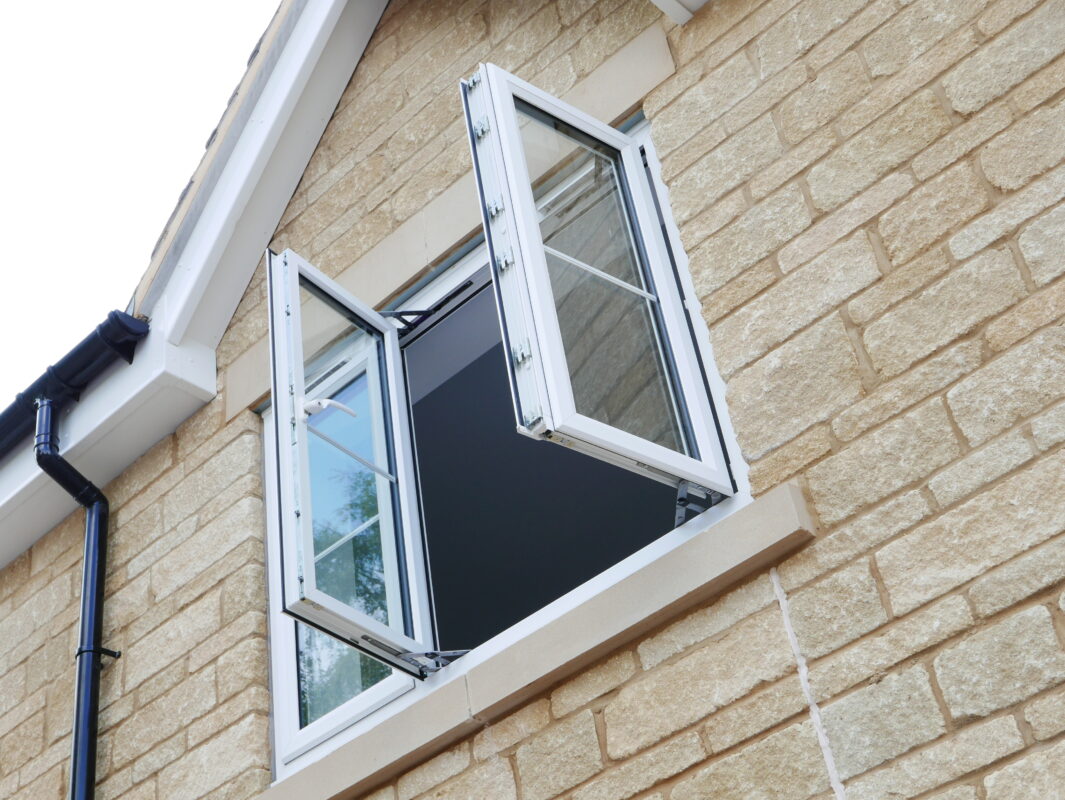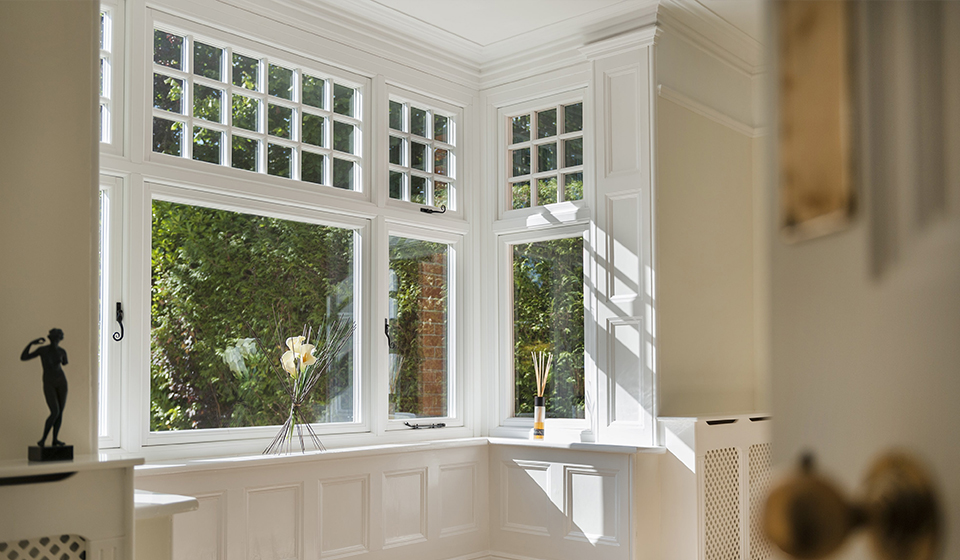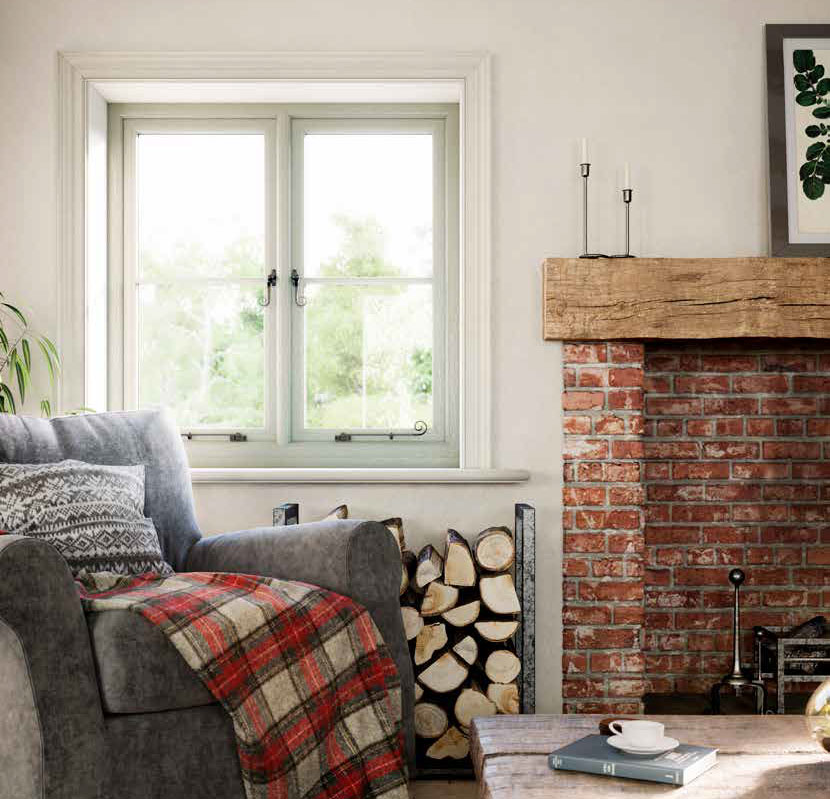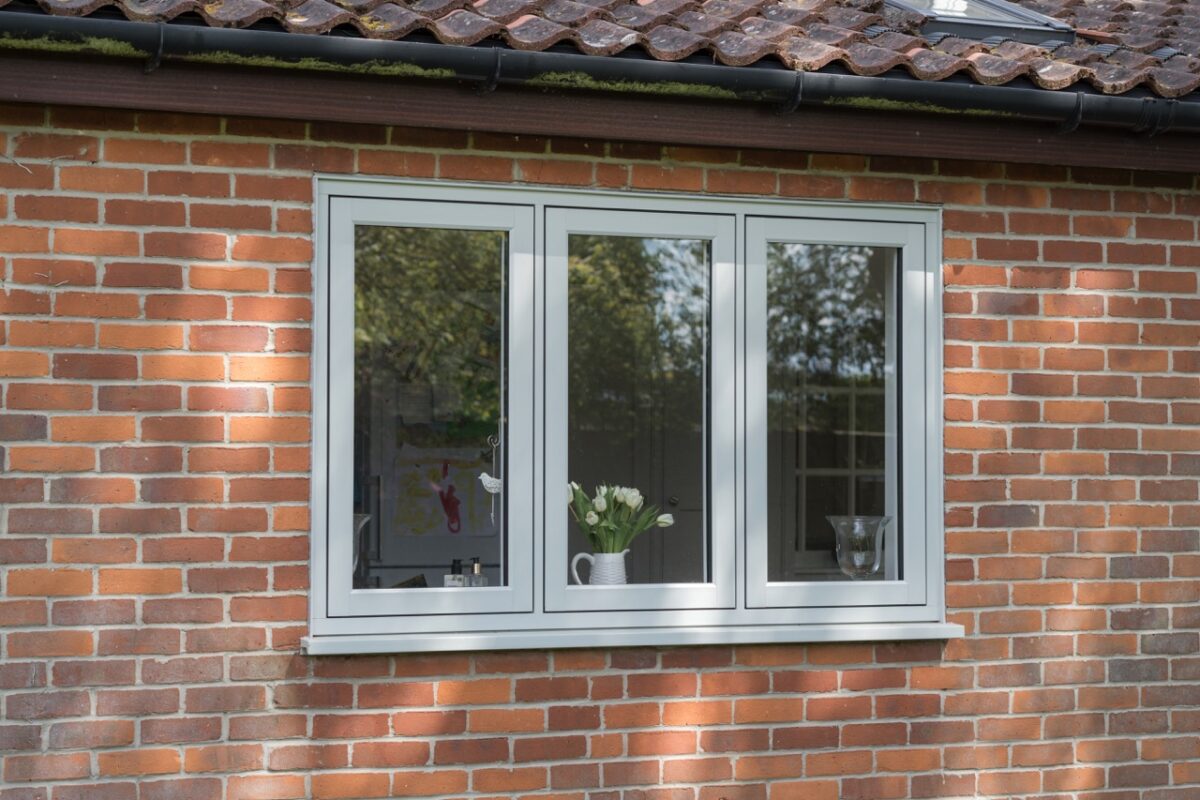When it comes to home improvements, we are often asked about the different types of uPVC windows, which play a key role in a home’s aesthetics, energy efficiency, and security.
Various types of window material are available, but uPVC has become popular due to its durability, low maintenance, and energy-saving benefits. However, with so many styles to choose from, how do you know which type is right for your home?
The different types of uPVC windows
- uPVC casement windows
- Flush casement windows
- Slimline uPVC windows
- Sash windows
- Bay windows
- Cottage suite uPVC windows
- The benefits of uPVC windows
- Choosing the right uPVC window frames for your home
- Summary of uPVC window styles
- FAQ
uPVC casement windows
Casement windows are a popular choice in the UK, and for good reason. These windows open outward like doors, providing excellent ventilation and a clear view of the outdoors. The hinge design allows casement windows to open fully, allowing maximum airflow into your home. They are also energy efficient, helping retain warm air in winter and reducing energy bills.
Combined with the modern look of uPVC frames, these windows seamlessly blend functionality with style. Many people choose them because they complement both contemporary and traditional homes.
Cleaning and maintaining casement windows is a breeze. The design allows you to easily access both sides of the glass, making them a practical choice.

Flush casement windows
These look like traditional windows but have all the benefits of a modern, streamlined unit.
Flush uPVC casement windows offer a sleek, modern look, with the sashes fitting flush (even) with the window frame closed. This design gives the window a more streamlined appearance.
Because the sash sits within the frame, it creates a smooth, uniform appearance, which can suit period properties or houses in areas with strict planning regulations.
Flush casement windows often have modern security features, such as multi-point locking systems, which make them harder to break into. These uPVC casement windows combine style, energy efficiency, and practicality.

Slimline uPVC windows
The ‘Slim Jim’ is one of our bestselling slim uPVC windows. It is exclusive to Thermaglaze and utterly unique to us.
Slimline uPVC windows are a modern variation of traditional uPVC windows. They are designed to offer a sleeker, more streamlined appearance while maintaining the practical benefits of standard uPVC frames. These windows are especially popular for those wishing to retain or enhance a property’s aesthetic, particularly older buildings or those with a more contemporary design, where thicker frames might look out of place.
The primary difference between slimline uPVC windows and regular windows is the slimmer profile of the frame. This is achieved by using advanced uPVC materials that are both strong and lightweight, allowing the frame to be thinner without compromising structural integrity or insulation performance. As a result, slimline windows provide a larger glazed area, offering better views with more natural light entering the room.

Sash windows
Traditional homes, with their rich character and history, often benefit from the charm of sash windows. However, Traditional sash windows are often made from wood and do not have the longevity of uPVC windows.
Thanks to modern materials, Thermaglaze can preserve period aesthetics while offering modern energy efficiency, making them an ideal choice for homeowners looking to maintain historical integrity.
Sash windows have long been a staple in British architecture. They bring a touch of elegance and traditional charm to any home and typically feature one or more movable panels, or sashes, that slide vertically.
While traditional timber windows have a certain charm, modern uPVC sash windows offer improved energy efficiency without sacrificing style. Advances in window technology mean you can enjoy the classic look of sash windows with added benefits like double or triple glazing.

Bay windows
Bay windows enhance the grandeur of Victorian and Edwardian architecture, creating a focal point that adds light and space to a room. Dramatic in appearance, the protruding bay can be used for additional seating or as a cosy nook.
The light and space that bay windows bring into your home can have a transformative effect. Natural light flooding in from multiple angles makes rooms feel larger and more inviting. It’s easy to see why bay windows were an excellent choice for living rooms, dining areas, or any space that deserves a strong visual statement.
Modern uPVC windows with double glazing can be tailored to suit timber textures and colour choices, making them ideal for rooms that need to be secure and protected from the elements.

Cottage suite uPVC windows
Cottage suite uPVC windows are popular with homeowners looking to combine traditional aesthetics with modern, low-maintenance materials. They offer the charm and style of a classic cottage window but with the durability, energy efficiency, ease of maintenance, and security that come with uPVC.
While uPVC windows are often associated with the colour white, cottage suite windows come in various colours and exterior woodgrain finishes, so they blend well with the traditional aesthetics of a cottage or older-style home, giving a truly authentic look.
Older cottages can be draughty and were often constructed when security wasn’t a priority. If you’d like a modern window that replicates the traditional appearance of timber and has all the benefits of a modern window without any of the negatives of older, insecure wooden windows, uPVC is a natural choice.

The benefits of uPVC windows
uPVC windows have gained popularity for their numerous benefits, making them a preferred choice for homeowners in the UK. One of the standout features of uPVC windows is durability, as uPVC doesn’t rot unlike wood. If you’re tired of constant upkeep, uPVC windows offer a hassle-free alternative.
Homeowners also appreciate the energy efficiency of uPVC. With proper installation and quality glazing, these windows can significantly reduce heat loss, keeping your home warm in the winter and cool in the summer. This translates to lower energy bills and a more comfortable living environment year-round.
The weather-resistant properties of uPVC windows make them particularly well-suited for the UK’s often unpredictable climate. They can withstand harsh weather conditions, from heavy rain to strong winds, without compromising performance. This resilience ensures that your windows continue to look and function beautifully, regardless of what Mother Nature throws your way.
Another key advantage of uPVC windows is their variety. They come in various styles and colours, allowing you to match them to your home’s design. Whether you prefer the clean lines of modern windows or the intricate details of more traditional designs, there’s a uPVC window style to suit your taste.
The affordability of uPVC windows is a significant draw for budget-conscious homeowners. They offer excellent value for money, providing long-lasting performance and aesthetic appeal without breaking the bank.


Choosing the right uPVC window frames for your home
Selecting the perfect uPVC window for your home involves considering several factors. First and foremost, take into account your home’s architectural style. Whether you live in a traditional or modern property, matching the window style to your home’s design will enhance its overall appearance.
Energy efficiency should be a primary consideration in your decision-making process. Efficient windows can reduce heating costs and improve your home’s comfort throughout the year. Look for features like double or triple glazing and consider the energy ratings of different window options.
Security is another critical factor. Modern uPVC windows have advanced locking mechanisms and robust frames, providing peace of mind. Assess the security features of each window style to find the best option for your needs.
Lastly, consulting a professional window installer can help you make an informed decision. The Thermaglaze team will happily discuss the different styles and materials for your home and budget, ensuring you make a choice that meets your aesthetic, budgetary, and functional requirements.
Summary of uPVC window styles
Exploring the many types of Thermaglaze uPVC windows allows you to find the perfect match for your home.
The correct windows can change the interior atmosphere of your home, creating a bright and inviting space. Natural light enhances the look and feel of your living areas, making them functional and inviting.
Customisable options allow you to personalise your window style and colour, ensuring they reflect your taste and complement your home’s design. Whether you prefer bold colours or subtle shades, there’s a uPVC window option to suit your preferences.
From the energy-efficient and versatile casement windows to the elegant and traditional sash windows, there’s a style for every property. As you consider the options, remember the benefits of uPVC windows in terms of durability, thermal efficiency, and aesthetic appeal. Which uPVC window style will you choose to transform your home?
Frequently Asked Questions
What are the benefits of uPVC windows?
uPVC windows offer several benefits for your home, including energy efficiency, noise reduction, low maintenance, durability, and security. They are also available in various styles and colours to suit your home’s aesthetic.
What types of uPVC windows are available for my home?
Various types of uPVC windows are available for your home, including casement windows, flush casement windows, sash windows, bay windows, slimline windows, and cottage suite windows. Each type has unique features and benefits, allowing you to choose the type that best suits your needs and preferences.
How do I choose the right uPVC windows for my home?
When choosing uPVC windows for your home, consider factors such as its style, any specific security features you may need, and any relevant planning considerations.
Are uPVC windows environmentally friendly?
Yes, uPVC windows are considered environmentally friendly because they are recyclable and have a long lifespan. They also offer excellent thermal performance, which can help to reduce your energy consumption and carbon footprint.
How long do uPVC windows last?
With proper care and maintenance, uPVC windows can last 20 to 30 years, perhaps longer. Regular cleaning and occasional lubrication of moving parts can help to prolong the lifespan of your uPVC windows and keep them looking and functioning like new.

